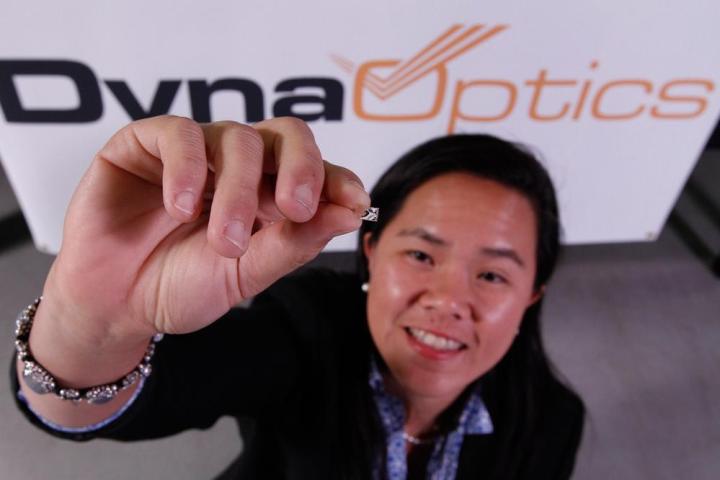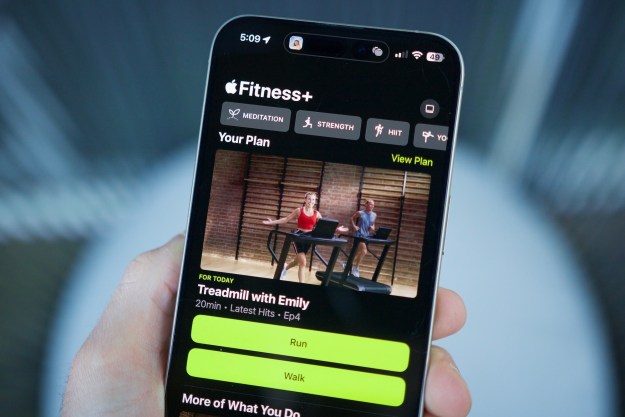
If we can make the technology work, you’ll see it in every smartphone in the world
To find out more, we spoke with Li Han Chan, co-founder and CEO of DynaOptics. Chan explained the system uses a progressive lens, a little like bi-focal spectacles, but with a graded focus spread across more than one lens, instead of a distinct split between two focal lengths on a single lens. An extending optical zoom lens uses at least three lenses, sometimes even double that amount, to produce the same effect. “These are specially shaped progressive lenses,” she said, “and focal length is altered by looking through different parts of it, while the lenses move laterally from one side to the other.”
No change to the way your phone looks
To fit inside a phone, DynaOptics’ lens won’t require any modification to the body, so the shape of a normal, everyday smartphone won’t change. It is slightly larger than a regular camera phone lens, but Chan clarified just how similar her company’s lens and a stock camera lens are, saying, “The difference in size should only be apparent to the designers, who must fit in a slightly different sized component. Regular users will never be aware of any trade-off.”
How long will we have to wait before our phones come with a truly effective and nearly invisible optical zoom lens? Chan is confident engineering samples will be ready by March 2015, followed by a period of testing, during which time the lens will be offered to companies. “The concept has been proven to work, and right now we’re working on bringing the image quality up to what we’re used to in our daily lives, and ensuring it’s manufacturable.”

At the moment, manufacturing is DynaOptics’ biggest challenge. “It’s about ensuring the lens is assembled to the level of precision we need,” Chan told us. “But it’s all part of developing a novel new technology. No-one has had to make a lens so small and so precise before.”
Early 2016 is the target for seeing DynaOptics lens inside a phone we can go out and buy. However, it all depends on perfecting the quality of the end result. “It needs to be at least as good as what you’re using in your phone right now,” she said. There’s no restriction on the megapixel count either, so it’ll keep pace with the latest camera trends, from 16 megapixels and upward.
DynaOptics already has interest from smartphone manufacturers, and Chan is very confident about the future. “Everybody is super keen on this tech, and the market is enormous. If we can make the technology work, you’ll see it in every smartphone in the world.”




